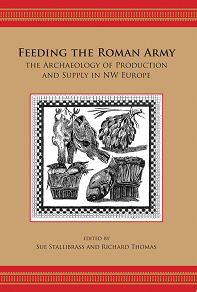E-bok
Feeding the Roman Army
These ten papers from two Theoretical Roman Archaeology Conference (2007) sessions bring together a growing body of new archaeological evidence in an attempt to reconsider the way in which the Roman army was provisioned. Clearly, the adequate supply of food was essential to the success of the Roman military. But what was the nature of those supply networks? Did the army rely on imperial supply lines from the continent, as certainly appears to be the case for some commodities, or were provisions requisitioned from local agricultural communities? If the latter was the case, was unsustainable pressure placed on such resources and how did local communities respond? Alternatively, did the early stages of conquest include not only the development of a military infrastructure, but also an effective supply-chain network based on contracts? Beyond the initial stages of conquest, how were provisioning arrangements maintained in the longer term, did supply chains remain static or did they change over time and, if so, what precipitated those changes? Addressing such questions is critical if we are to understand the nature of Roman conquest and the extent of interaction between indigenous communities and the Roman army. Case studies come from Roman Britain (Alchester, Cheshire, Dorset), France, the Netherlands and the Rhine Delta, looking at evidence from animal products, military settlements, the size of cattle, horses, pottery and salt. The editors also provide a review of current research and suggest a future agenda for economic and environmental research.
Logga in för att låna
Information
Stöds av följande plattformar
PC/Mac
Surfplatta Läsplatta
Smartphone

